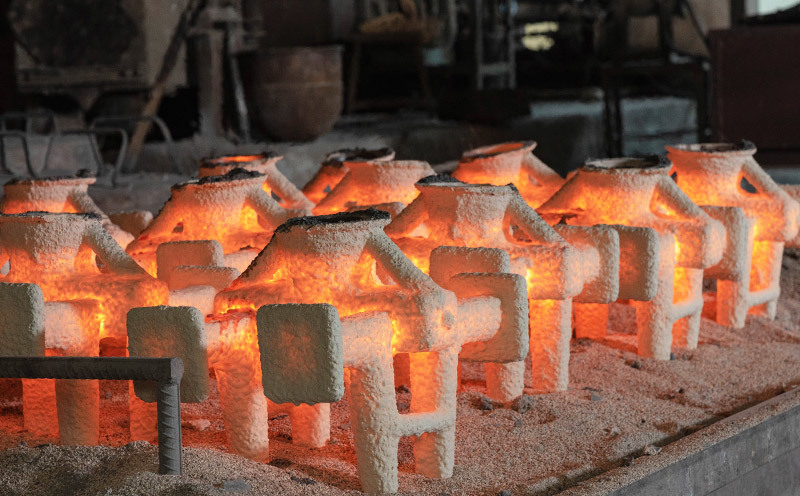Applications Of Investment Casting
Release time:2025-06-13
Investment casting, also known as lost-wax casting, is a precision metal-forming process that has been used for thousands of years but remains highly relevant in modern manufacturing. It involves creating a wax pattern of the desired part, coating it with ceramic to form a mold, and then melting away the wax before pouring molten metal into the cavity. This method produces complex, high-precision components with excellent surface finishes.

Here are some key applications of investment casting across various industries:
1. Aerospace Industry
- Turbine blades and vanes: Investment casting is ideal for producing hollow, air-cooled turbine blades used in jet engines and gas turbines due to its ability to create internal cavities.
- Structural components: Complex-shaped parts such as housings, brackets, and ducts can be made with tight tolerances.
- High-temperature alloys: The process supports superalloys like Inconel and titanium, which are essential for aerospace applications.
2. Automotive Industry
- Engine parts: Components like intake manifolds, exhaust system parts, and turbocharger wheels benefit from the dimensional accuracy and thin-wall capabilities.
- Speed changer and drivetrain components: Gears, shift forks, and differential cases can be cast with minimal need for secondary machining.
- Suspension components: Control arms, knuckles, and other suspension parts can be produced with high strength-to-weight ratios.
3. Medical Industry
- Surgical instruments: Precision tools such as forceps, clamps, and retractors are often investment cast for their fine detail.
- Implants: Custom orthopedic implants (e.g., hip or knee replacements) can be cast from biocompatible materials like titanium alloys.
- Dental prosthetics: Crowns, bridges, and implant frameworks are frequently made using this method.
4. Energy and Power Generation
- Gas and steam turbine components: Blades, nozzles, and casings for power generation equipment require high integrity and thermal resistance.
- Valves and fittings: Complex valve bodies and pump components can be made from corrosion-resistant alloys for oil and gas applications.
5. Defense and Military Equipment
- Weapon components: Parts such as triggers, receivers, and barrels benefit from the high strength and precision achievable.
- Armor and vehicle parts: Structural and mechanical components for military vehicles and aircraft.
6. Industrial Machinery and Equipment
- Pumps and compressors: Impellers, housings, and other fluid-handling components can be cast with good internal surfaces.
- Gear blanks and sprockets: Custom gears with minimal material waste.
- Wear parts: Bushings, rollers, and wear plates made from hardened alloys.
7. Artistic and Decorative Applications
- Sculptures and statues: Artists use investment casting to replicate intricate designs in bronze, aluminum, or stainless steel.
- Jewelry: Fine details and custom shapes make it the preferred method for casting rings, pendants, and other ornamental items.
8. Marine Industry
- Propellers and underwater components: Investment casting allows for the production of hydrodynamic shapes with high corrosion resistance.
- Valves and fittings: Used in seawater systems where durability and precision are critical.
Advantages That Make These Applications Possible:
- High dimensional accuracy and repeatability
- Excellent surface finish (reduces need for machining)
- Ability to cast complex geometries and thin walls
- Wide range of materials (stainless steel, carbon steel, aluminum, bronze, titanium, etc.)
- Minimal material waste







